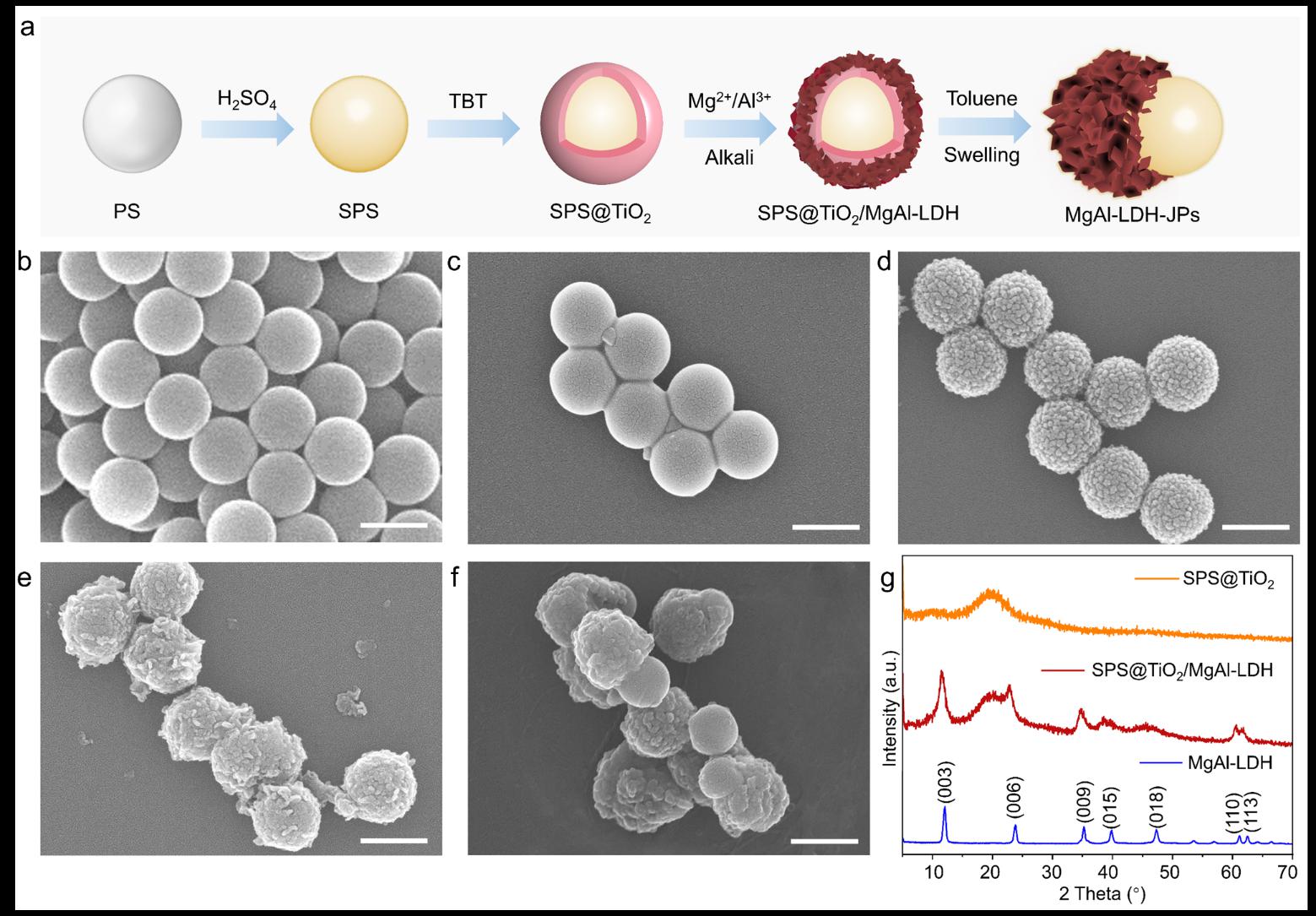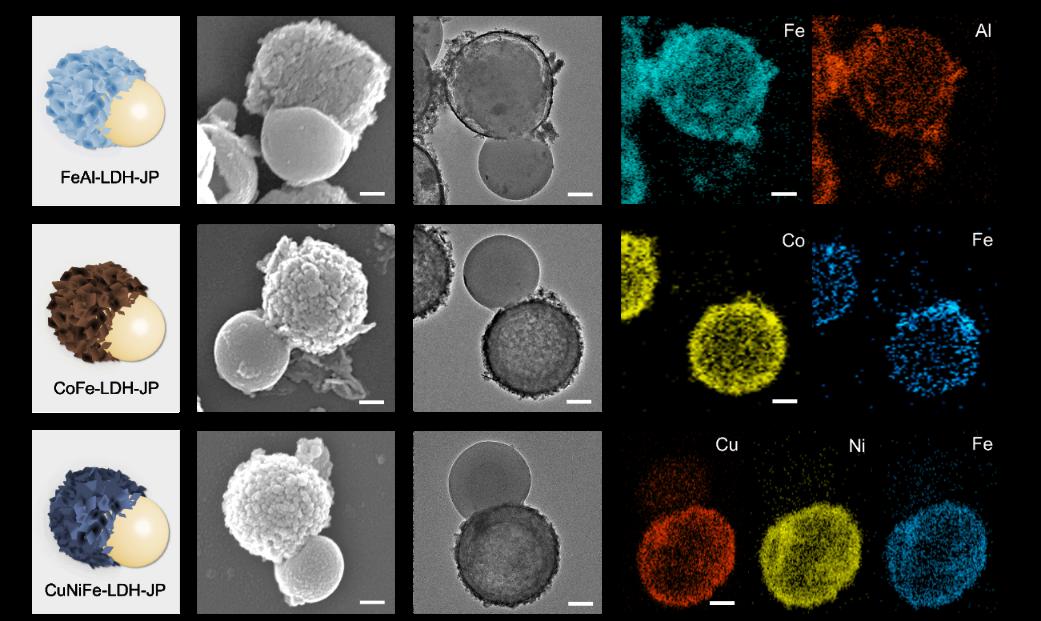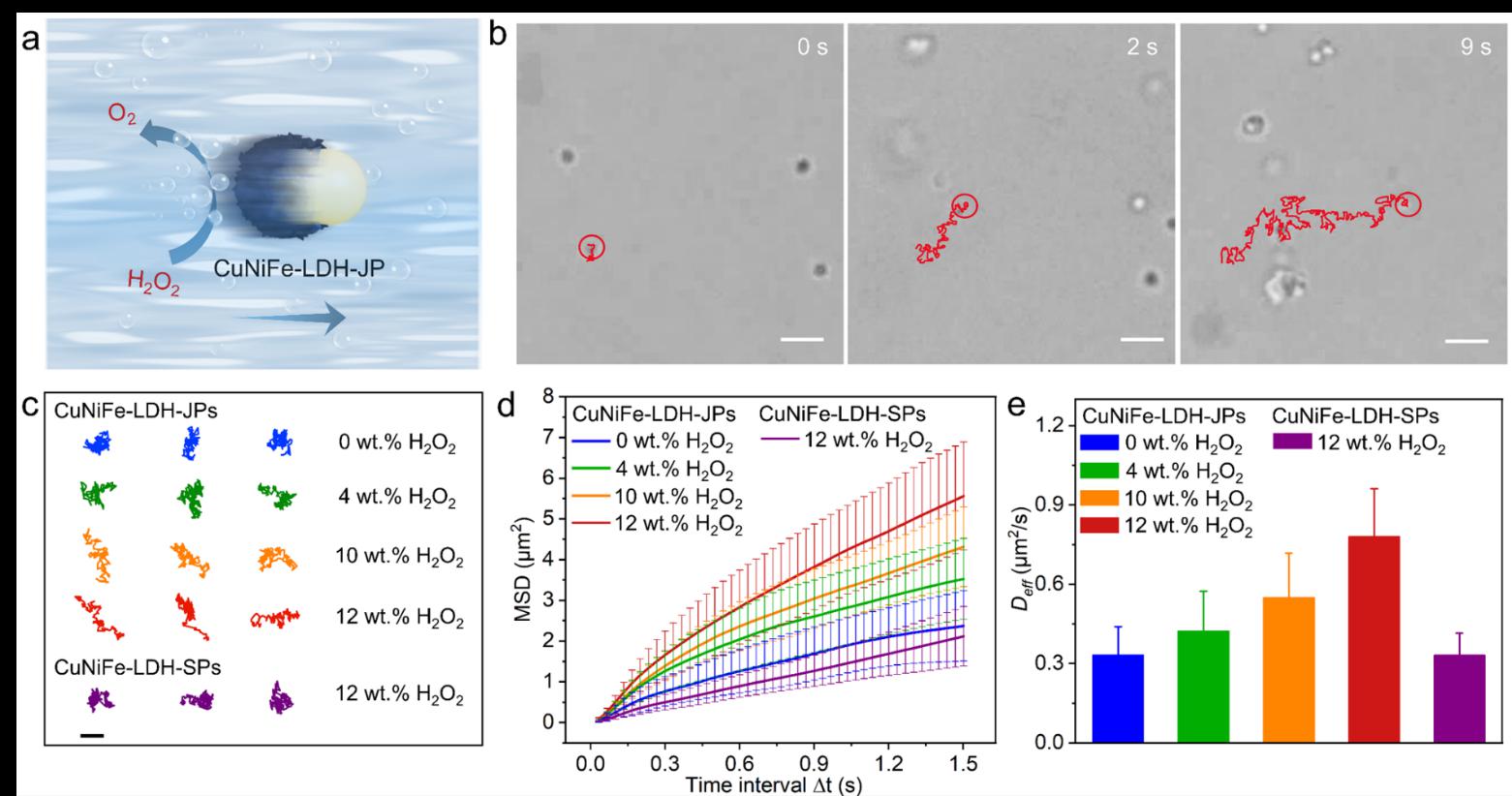Janus micro-/nano-materials, due to their structural or functional asymmetry, exhibit unique properties in fields such as catalysis, self-propelled motors, interfacial engineering, and optoelectronics. Among them, organic-inorganic composite Janus particles can integrate organic "soft" components and inorganic "hard" components in distinct regions, providing new building blocks for the hierarchical structural design of composite materials, making them a research hotspot in materials science in recent years. Among numerous inorganic components, layered double hydroxide (LDH) possess properties such as high specific surface area, exchangeable interlayer anions, and tunable metal cations, offering new design possibilities for constructing organic-inorganic composite Janus particles. However, research on LDH-based Janus materials remains relatively limited. Given the multifunctionality and designability of LDH, developing structurally controllable and easily scalable LDH-based Janus particles (LDH-JPs) is of great significance for expanding their applications in areas like catalysis and environmental remediation.
In this study, we report a robust and scalable strategy for the synthesis of LDH-JPs with precise morphological control and compositional versatility. Using a swelling-induced symmetry-breaking approach (Figure 1), snowman-like LDH-JPs were prepared, featuring a polystyrene (PS) hemisphere and an LDH hemisphere. Compared with other established methods for fabricating Janus particles, such as Pickering emulsion and self-assembly, the swelling-induced symmetry-breaking strategy avoids the direct surface modification of LDH to introduce organic components, and can be performed under relatively high solid-content conditions, which facilitates the scalable production of LDH-JPs for practical applications. The organic-to-inorganic component ratio of LDH-JPs can be finely tuned by controlling the extent of swelling through the use of different percent of solvents or adjusting the swelling time. By tailoring the metal ion precursors, a series of LDH-JPs, including MgAl-LDH-JPs, FeAl-LDH-JPs, CoFe-LDH-JPs, and CuNiFe-LDH-JPs, were successfully obtained (Figure 2). Upon thermal calcination, the PS component was removed to yield hollow, bowl-shaped nanostructures. Taking advantage of the catalytic properties of LDH and the asymmetry of particle, self-propelled motion of LDH-JPs was achieved in chemical environments (Figure 3).

Figure 1.(a) Schematic illustration of the synthesis route of LDH-JPs. SEM images of (b) PS, (c) SPS, (d) SPS@TiO2, (e) SPS@TiO2/MgAl-LDH microspheres and (f) MgAl-LDH-JPs. (g) XRD patterns of SPS, SPS@TiO2, and SPS@TiO2/MgAl-LDH microspheres prepared as described in Figure 1a, along with MgAl-LDH nanosheets synthesized by the conventional coprecipitation method. Scale bar: 500 nm.

Figure 2.(a,e,i) Schematic illustration of FeAl-LDH-JP, CoFe-LDH-JP and CuNiFe-LDH-JP. b-d) SEM, TEM and TEM-EDS elemental mapping images of FeAl-LDH-JPs. (f-h) SEM, TEM and TEM-EDS elemental mapping images of CoFe-LDH-JPs. (j-l) SEM, TEM and TEM-EDS elemental mapping images of CuNiFe-LDH-JPs. Scale bar: 200 nm.

Figure 3.(a) Schematic illustration of the chemically-activated self-propelled CuNiFe-LDH-JPs. (b) Time-lapse images of the movement of a CuNiFe-LDH-JP in an aqueous solution containing 12 wt% H2O2 and 1 wt% SDS. Duration time: 9 s. Scale bar: 5 μm. (c) Extracted trajectories of CuNiFe-LDH-JPs and CuNiFe-LDH-SPs in aqueous solutions containing different concentrations of H2O2 and 1 wt% SDS (n = 3). Duration time: 9 s. Scale bar: 2 μm. (d) MSD and (e) Deff of CuNiFe-LDH-JPs and CuNiFe-LDH-SPs in aqueous solutions containing different concentrations of H2O2 and 1 wt% SDS (n > 20).
This work, entitled "Layered Double Hydroxide-Based Janus Particles," was published in the journal Advanced Functional Materials. The first author is Ziwei Wang, a Ph.D. candidate at the Beijing Advanced Innovation Center for Soft Matter Science and Engineering, and the corresponding author is Professor Shaowei Shi. This research was supported by the National Natural Science Foundation of China.
Original Article Link: https://advanced.onlinelibrary.wiley.com/doi/10.1002/adfm.202520376